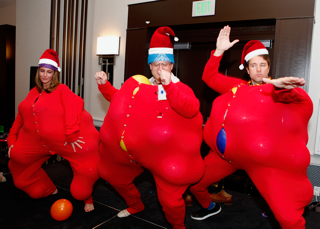We’ve outlined a few points to take into consideration as you begin planning or implementing any team building event for your company.
Goals
A good team building event should produce results regardless of whether you’ve defined them. However, identifying any priorities up front allows you to make the right decisions about location, group size, challenges and other decisions that shape the way a team building event unfolds. This is certainly an area where a professional facilitator can offer advice and recommendations.
Engagement
Engagement is the name of the game and It goes without saying that any exercise that leaves participants on the outside or unengaged in any way is not going to be effective. If you’re using a professional team building company, this is something that you should expect of them. If you’re putting together your own exercise or event, it should be your primary goal in terms of structuring the actual activity.
Location (On Site vs. Off Site)
Location is a big factor in any team building event/exercise and there are advantages to both on site and off site:
By changing the environment, going offsite makes it a lot easier for individuals to break out of the “identities” that define and, perhaps, confine them in the workplace. If the goal is to really switch gears and break from the mold, off site events are probably the way to go.
On the other hand, doing something different in the workplace setting can help redefine the way employees perception of a workplace by interacting with each other in a brand new way within a familiar setting.
Professional Facilitator vs. DIY
The obvious benefit to DIY is that it’s cheaper below a certain budget threshold. There are a lot of situations where a company may not be able to afford a professional team building company in which case it’s definitely possible to put on a good team building event. One downside to DIY team building is that, similar to on site vs. off site, having company management or HR in charge can prevent people from breaking out of their daily working roles. And above all else, make sure you don’t include cheesy activities like “trust falls!” You don’t want to elicit eye-rolls from the group!
Mix things Up
Break up the standard “cliques” and give everyone an opportunity to get to know people they don’t typically spend a lot of time with. Maybe the obligatory head-nod as people pass by each other in the hallway might turn into an actual conversation after they’ve had a chance to spend some quality time together!
Be Creative!
Make sure that the activity gives your group the opportunity to use their creativity and show off aspects of their personalities that may not come to life in their daily work regimen.





























